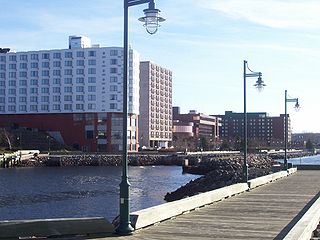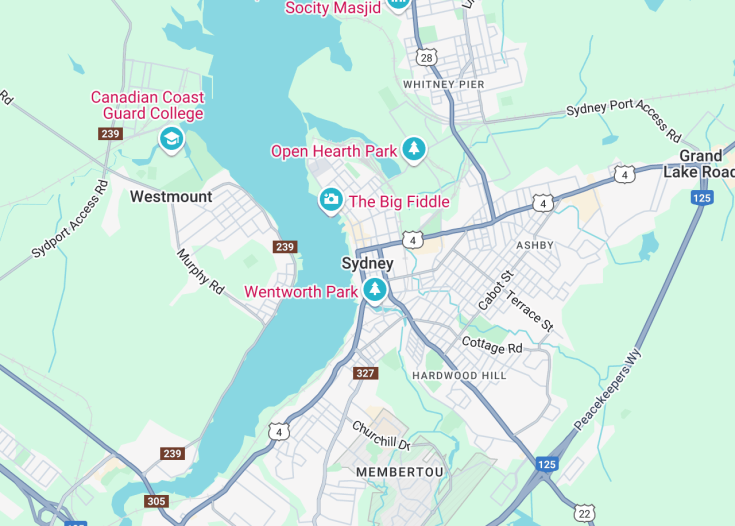Sydney, Nova Scotia, a picturesque coastal town rich in history and natural beauty, beckons travelers to explore its unique charm. As the historic capital of Cape Breton Island, Sydney boasts a vibrant waterfront and diverse cultural heritage. Visitors can indulge in its scenic walking trails, delectable seafood, and lively music scene, while landmarks like the iconic Big Fiddle at the Joan Harriss Cruise Pavilion provide memorable photo opportunities. The blend of colonial architecture, friendly locals, and compelling museums, such as the Cape Breton Miners’ Museum, further enrich the visitor experience, making Sydney a must-visit destination.
For a true taste of local culture, be sure to attend a ceilidh, traditional Gaelic gatherings with music and dancing, available throughout the year in community halls.
To make the most of Sydney’s scenic views, consider booking a harbor cruise that offers a fresh perspective of the town, complemented by insightful commentary.
Top things to do & see in Sydney
Select the following sights and activities to discover best tickets and tours available in Sydney.
Sydney: A Scenic Gateway to Cape Breton’s Wonders
| Country | Nova Scotia (Canada) |
| Time in Sydney | GMT-3 |
| Language spoken | English |
| Population | 31,597 (Statistics Canada, 2021 Census) |
| Currency | Canadian Dollar (CAD $) |
| Airports | J.A. Douglas McCurdy Sydney Airport (7 mi / 11 km). |
Sydney, located in Canada, serves as a hub of cultural and economic activity on Cape Breton Island. Originally founded in 1785 by British loyalists fleeing the unrest in the American colonies, Sydney has grown from a modest colonial settlement into a bustling urban center. Its history is deeply entwined with the coal and steel industries, which shaped its development for over a century.
The city is renowned for its picturesque waterfront and historic sites, including the iconic Big Fiddle of the Ceilidh, located at the Port of Sydney—a large fiddle and bow that celebrate the musical heritage of Cape Breton. Sydney’s vibrant community is also home to a rich tapestry of Gaelic and Acadian cultures, making it a melting pot of traditions and histories.
As a gateway to the rest of Cape Breton Island, Sydney is an ideal starting point for exploring the famous Cabot Trail, recognized worldwide for its stunning landscapes and rugged coastlines. The city itself hosts a variety of festivals throughout the year, showcasing local music, food, and craft, drawing visitors from across the globe.
Despite its small size, Sydney offers a range of amenities and attractions, from educational museums like the Cossit House Museum to outdoor adventures in the nearby Cape Breton Highlands. With its friendly locals and welcoming atmosphere, Sydney provides a unique blend of historical depth and contemporary culture, making it a compelling destination for tourists and residents alike.
Where is Sydney?
Sydney is situated on the east coast of Cape Breton Island in Nova Scotia, Canada, nestled along the shores of Sydney Harbour.
Distances:
| Route | Distance by car | Time by car |
|---|---|---|
| Halifax to Sydney | 250 miles (400 km) | Approx. 4 hours and 30 mins |
| Truro to Sydney | 190 miles (306 km) | Approx. 3 hours and 20 mins |
| Port Hawkesbury to Sydney | 80 miles (129 km) | Approx. 1 hour and 30 mins |
What is Sydney famous for?
Sydney is famous for its historical sites, cultural festivals, and as the gateway to the Cabot Trail. It beautifully meshes its rich history with vibrant modern culture, making it a must-visit destination on Cape Breton Island.
History
Pre-European Contact
Before the arrival of European settlers, the area now known as Sydney was inhabited by the Mi’kmaq people, part of the larger Algonquin-speaking communities that lived across what is now Eastern Canada. The Mi’kmaq used the area primarily as a seasonal hunting ground, taking advantage of the rich marine and woodland resources.
1785-1900: Establishment and Growth
Sydney, founded in 1785 by Colonel Joseph Frederick Wallet DesBarres, was named after Thomas Townsend, 1st Viscount Sydney. DesBarres arrived to establish a colony at the behest of the British Crown amidst the influx of Loyalists fleeing the American Revolution. Initially, Sydney served as the capital of the new colony of Cape Breton Island. The early economy was built around the fishing and coal industries, bolstered by waves of Irish and Scottish immigrants. As Cape Breton merged back into Nova Scotia in 1820, Sydney continued to grow, primarily due to the expansion of coal mining operations which began to dominate the local economy.
1901-2000: Industrial Expansion and Decline
The 20th century marked a period of significant industrial growth for Sydney. The opening of steel mills by the Dominion Steel and Coal Corporation (DOSCO) in the early 1900s transformed the town into an industrial hub in Atlantic Canada. The population increased dramatically during this period, with workers flocking to Sydney for job opportunities. However, the latter half of the century saw a decline in steel production and coal mining, leading to economic challenges and a shift toward diversifying the local economy. The effects of industrial pollution became a major concern, culminating in large-scale environmental cleanup projects.
2001-Present: Regeneration and Modern Sydney
In recent years, Sydney has focused on regeneration and economic diversification. Efforts have been made to revitalize the waterfront and cultural sectors. The service industry, technology, and tourism are now significant aspects of Sydney’s economy, moving away from its heavy industrial past. The community continues to celebrate its rich history while adapting to meet contemporary challenges.
Visit Sydney
What to see and do in Sydney, Nova Scotia (Canada)
Exploring Sydney offers a unique blend of historical and cultural experiences along with scenic beauty. Visitors should not miss the iconic Sydney Waterfront, where the world’s largest fiddle greets travelers, symbolizing the city’s rich musical heritage. The historic North End area is a must-visit for those interested in architecture and history. For a deeper dive into the local culture, the Cape Breton Centre for Craft and Design offers workshops and galleries featuring local artisans. Outdoor enthusiasts will enjoy the nearby Cape Breton Highlands, ideal for hiking and observing wildlife.
- Sydney Waterfront with the Big Fiddle
- Historic properties and Jost House Museum
- Cape Breton Centre for Craft and Design
- Scenic trails in Cape Breton Highlands National Park
Celebrating Sydney: Local Events and Festivals
Sydney hosts a variety of events throughout the year, celebrating its cultural heritage and community spirit. The most notable is the Celtic Colours International Festival held every October, which features nine days of music, dance, and workshops, highlighting Gaelic culture and traditions. Summer months are lively with the Sydney Waterfront Festival, offering concerts, food, and crafts that showcase local talents and cuisine.
Best time to visit Sydney
The best time to visit Sydney is during the late spring through early fall, from May to October, when the weather is most favorable for exploring the outdoors and attending local events like the popular Celtic Colours Festival.
is Sydney worth visiting?
Sydney, with its rich history, vibrant cultural scene, and stunning natural landscapes, is indeed worth visiting. Whether you’re drawn to exploring its historic sites, engaging in outdoor activities, or experiencing its lively festivals, Sydney offers a charming and diverse array of attractions that cater to all interests. Its ongoing efforts to preserve and celebrate its heritage while embracing modernity make it a captivating destination for any traveler.









